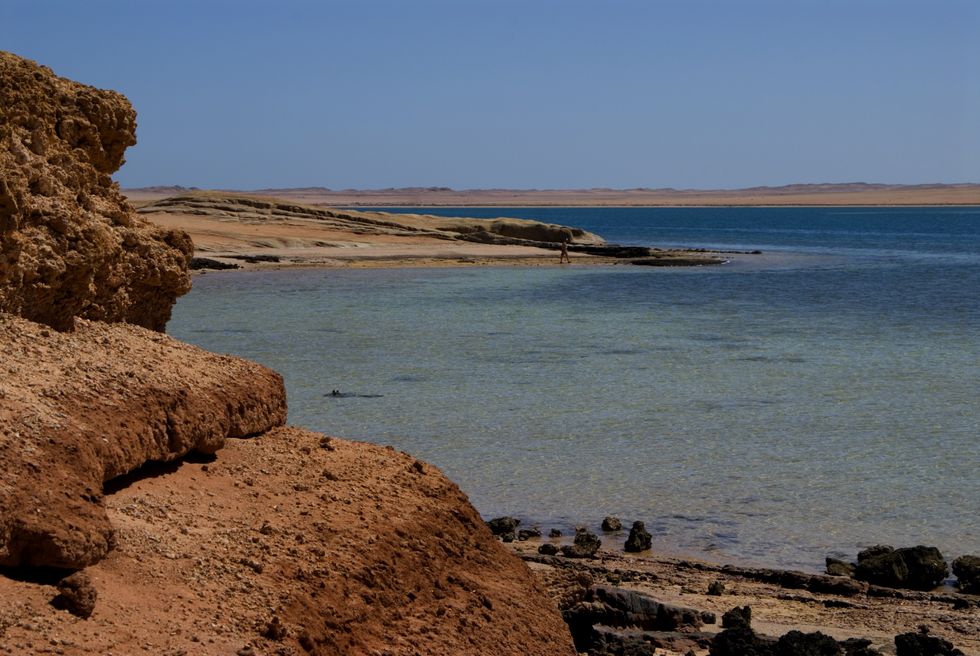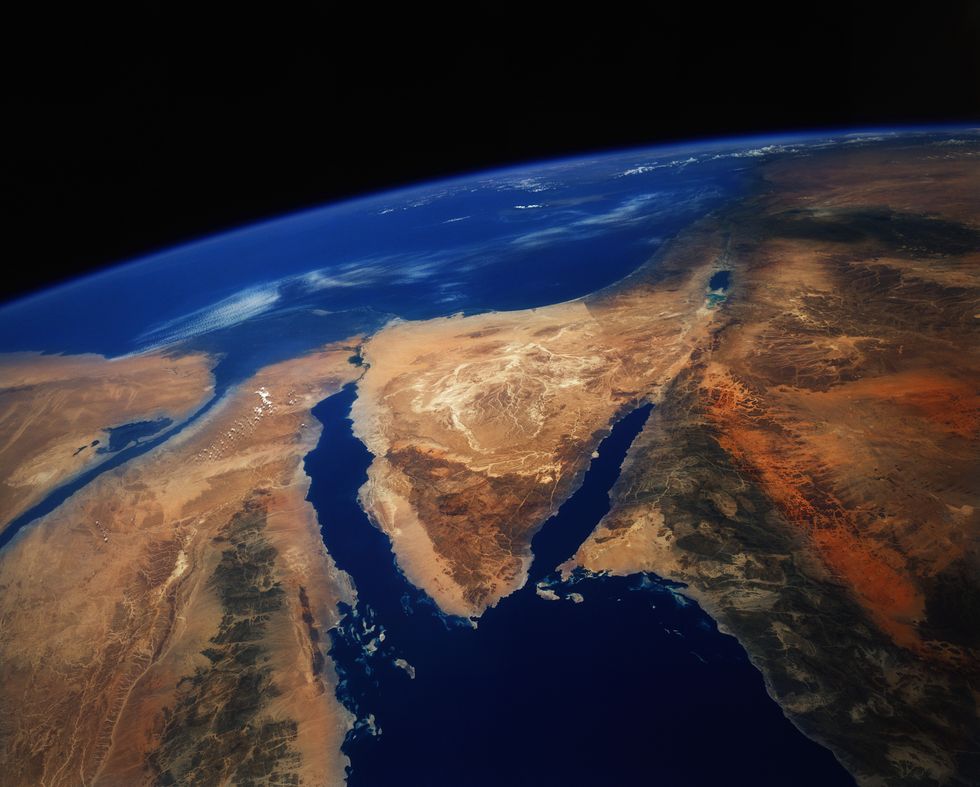The Gulf of Aqaba's deeper and wider characteristics align with the biblical account in the Book of Exodus
Don't Miss
Most Read
Trending on GB News
Scientists have discovered deadly brine pools nearly 4,000 feet beneath the surface of the Red Sea's Gulf of Aqaba.
The pools contain water up to 10 times saltier than normal seawater and are completely devoid of oxygen, creating natural death traps for marine life that ventures inside.
These rare underwater formations are among only 40 such pools ever discovered across the Red Sea, Mediterranean and Gulf of America.
The extreme environment is believed to mirror conditions found on early Earth, particularly in deep-sea locations where life may have first emerged.

The Red Sea
GETTY
The newly discovered pools lie in a region where some believe Moses parted the waters while leading the Israelites to the Promised Land.
The Gulf of Aqaba's deeper and wider characteristics align with the biblical account in the Book of Exodus.
Scientists have named them the NEOM Brine Pools, marking an extension of known Red Sea brine pool locations.
The pools act as geological time capsules, with their undisturbed sediment preserving records of past events in the Gulf of Aqaba.
The area is known for its mysterious features, including extreme depths, volcanic activity and unusual temperature variations.
The remarkable discovery came during the final moments of an extensive underwater exploration.
LATEST DEVELOPMENTS:
A person holding the Bible
GETTY
"We were very lucky. The discovery came in the last five minutes of the ten-hour ROV dive that we could dedicate to this project," said Professor Sam Purkis from the University of Miami.
The team used a remotely operated underwater vehicle (ROV) during their six-week exploration.
In those crucial final minutes, the ROV detected what researchers described as a "desolate seabed thickly draped with mud," leading them to the brine pools.
The dense, highly saline water settles at the ocean floor, unable to mix easily with surrounding seawater.
While most marine life perishes upon entering these pools, they host remarkable extremophile prokaryotes that thrive in harsh conditions.
Scientists discovered sulfate-reducing bacteria that convert sulfate into energy, dramatically altering the pool's chemistry.

The Israelites Crossing the Red Sea, with Moses Parting the Waters
GETTY
These bacteria have lowered sulfate levels to create the lowest sulfate-to-chloride ratio ever recorded in the region.
Despite their lethal nature, the pools attract various marine creatures to their edges, including eels, shrimp and mollusks.
These animals gather near the pools to feed on resources created by the bacterial communities.
These extreme environments offer scientists valuable insights into how life may have originated on Earth.
"Our current understanding is that life originated on Earth in the deep sea, almost certainly in anoxic conditions," Professor Purkis told Live Science.
The brine pools could also guide the search for extraterrestrial life.

The top of the Red Sea
GETTY
"Studying this community hence allows a glimpse into the sort of conditions where life first appeared on our planet, and might guide the search for life on other 'water worlds' in our solar system and beyond," Purkis explained.
The pools' unique microbial communities demonstrate how life can adapt to extreme conditions.
Core samples extracted from the pools have revealed an unbroken record of regional history spanning more than 1,000 years.
The samples document past rainfall patterns, earthquakes and tsunamis in unprecedented detail.
Analysis shows major floods from rainfall occur approximately every 25 years in the region.
Tsunami events are less frequent, taking place roughly once every century.
These preserved records offer scientists a unique window into the Gulf of Aqaba's geological and climatic past.
The undisturbed sediment layers provide crucial data about historical weather patterns and seismic activity in the area.
The discovery of these brine pools adds to a select group of similar formations worldwide.
Only about 40 such pools have been documented across the Red Sea, Mediterranean and Gulf of America.
The NEOM Brine Pools represent a crucial addition to scientific understanding, offering a unique preservation environment for regional climatic and tectonic events.
Their undisturbed conditions make them invaluable time capsules for studying Earth's history.
These pools not only preserve geological records but also host extraordinary life forms, demonstrating nature's ability to thrive in the most extreme conditions.









